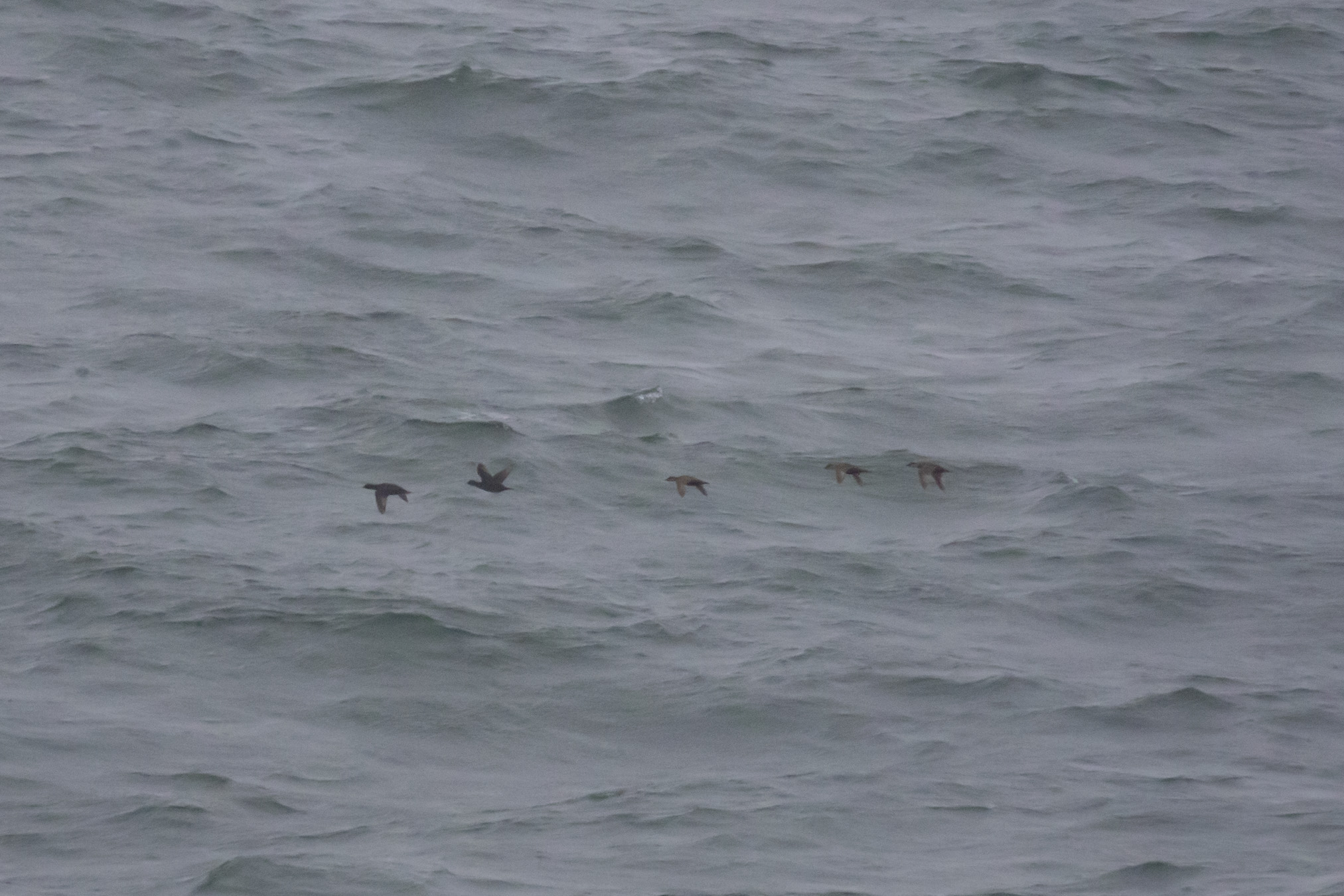Common Scoters are sea ducks. Their winters are spent off the UK and Irish west coasts, they migrate to Scandinavia and Russia to breed in arctic pools in the permanent daylight of the northern summer. As such, they spend most of their lives well away from land-locked Oxfordshire. Small numbers of Common Scoters appear in Oxfordshire in spring, mid-summer and autumn (see here for a few more details). The majority of records come from the county’s largest waterbody, Farmoor Reservoir, as birds drop in during their migration. Common Scoter migrate at night and are perfectly camouflaged. The males are sooty black, the females dark brown. They will not be seen at night. Fortunately, they have evolved to make frequent and distinctive flight calls to each other. It is these calls that betray their presence in the night sky. And until up to 2019 that was the story of Common Scoters in the Oxfordshire. Then came the global covid pandemic.

By late March 2020, hundreds of birders were forced to be at home in the first national coronavirus lockdown. As news broke that a significant nocturnal movement of Common Scoter was occurring across northern England, lockdowned birders across the rest of the country began listening out for the flight calls of Common Scoters. Something was happening. It became apparent that Common Scoters not only used the Wirral-Humber flyway in northern England, but also the Severn-Thames flyway across southern England, and in fact, were being reported right across southern England as they migrated east overland (see here).
As early spring 2021 came around, Isaac West and I discussed the possibility of trying to hear Common Scoters on nocturnal migration from our local patch of the Lye Valley and Warneford Meadow in Headington, Oxford. This area, comprising of a local nature reserve, a meadow and a golf course has no open water and until 8th March 2021 over 368 patch visits had only produced one species of duck: Mallard. The 8th March saw a flock of 7 Goosander flyover, a completely unexpected new species for the area and a remarkable record. Even so, trying to add a species of sea duck to this list seemed like complete madness. But the first covid spring of 2020 had taught us something: the skies are alive with the sound of scoters. Sometimes.
This week we spent three evenings, socially distanced, on Southfield Golf Course listening to the sky. Isaac prefers the expression “live noc-mig”, but I like “sky-listening”. Like “sea-watching”, it captures what you actually spend most of your time doing. Almost immediately I heard the sound of Wigeon passing overhead. A satisfying start and duck number three for the Lye Valley area! Shortly afterward, we heard the sound of a very loud scooter revving up and driving through east Oxford. But above it, the flight call of a Coot:
So we had scooter, but not scoter. The best moment of the evening was at 21:30 when the first Barn Owl for the area hissed at us:
The first 90-minute sky-listening session had produced three new species for the area. I was hooked. With little wind forecast for the next night, we tried again on Tuesday 23rd March. Very early on we both heard the pyu-pyu-pyu calls of a migrating Common Scoter flock. They were very distant, to the east, so distant in fact that Isaac’s recorder did not pick up the calls. Success, but we wanted proof. We wanted a recording. We tried again on Wednesday 24th March. It was desperately quiet, not even a Redwing called. By 21:30 we were both cold and about to give up, when the ringing calls of Common Scoter were heard again, this time from the west. The flock passed over, heading east, but was just loud enough to be audible on the recording:
Scooter and scoter were in the bag! You don’t need special equipment to hear these migrating flocks of sea ducks. Although distant, both the flocks we heard on the nights of 23rd and 24th March were quite clearly audible over the sounds of east Oxford. An overhead flock would be quite an experience.
Find a quiet spot on a still night, be familiar with the flight call (Teal and other duck species are also on the move at night and are also vocal) and be patient. We spent a total of 4.5 hours listening across three successive evenings to hear the two Common Scoter flocks pass over. Last year the major movement of Common Scoter across England occurred in the first week of April, so we may not be at peak scoter yet. The next few weeks provide a real opportunity to get Common Scoter, an arctic-breeding sea duck, on your Oxfordshire patch and garden lists. Incredible stuff.

Fab. fortune favours the brave.